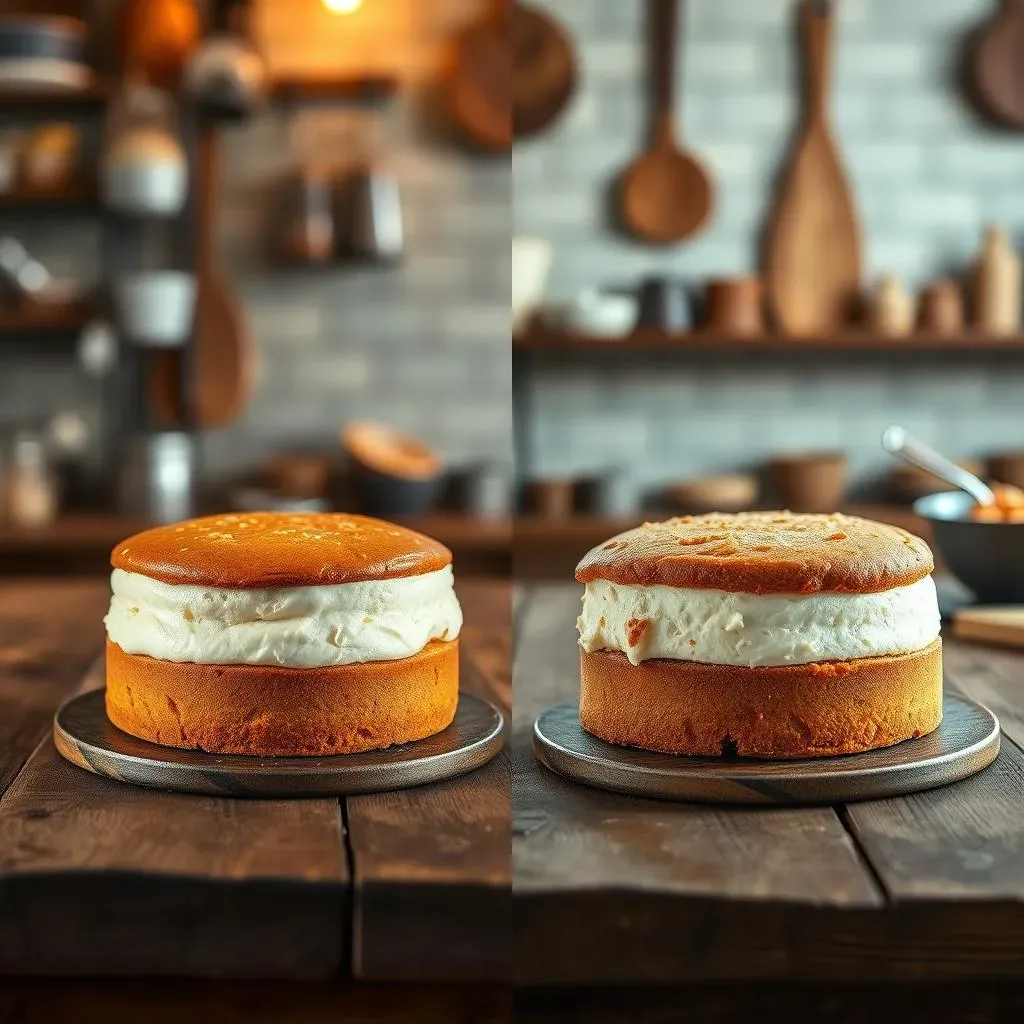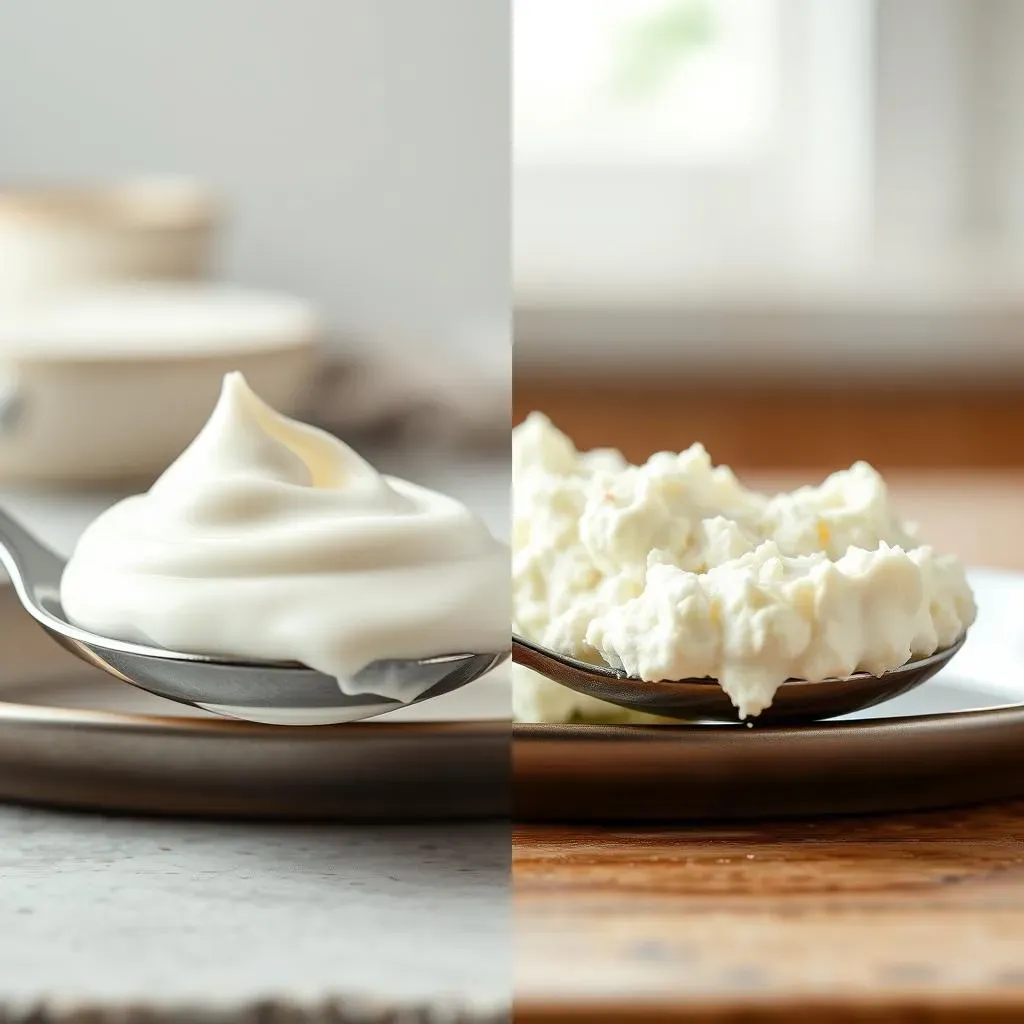Table of Contents
Have you ever stared blankly at a recipe, realizing you're missing a key ingredient – sour cream, perhaps? And then, that lightbulb moment: you have ricotta! But can you substitute ricotta for sour cream? That's the burning question we'll tackle in this article. We'll explore the nuances of this substitution, examining whether it's a viable option depending on the recipe. We'll look at the crucial differences between ricotta and sour cream – their textures, their flavors, and how those differences might impact your culinary creations. Whether you're baking a cake, whipping up a dip, or preparing a savory dish, understanding these distinctions is key. We’ll even dive into practical tips and specific recipes where a ricotta swap might work wonders, and others where it might be a recipe disaster. So, let's get started and discover the truth behind "can you substitute ricotta for sour cream?" Prepare to unlock a new level of culinary flexibility!
Can You Substitute Ricotta for Sour Cream in Baking?

Can You Substitute Ricotta for Sour Cream in Baking?
Cakes and Muffins: A Risky Business
So, you're baking a cake and you're out of sour cream? Ricotta might seem like a tempting swap, especially if you're aiming for a richer, cheesier flavor. However, it's a bit of a gamble. Sour cream contributes moisture and a subtle tang. Ricotta, while creamy, is denser and sweeter. This can lead to a cake that's drier and less tangy than intended. The success hinges heavily on the specific recipe – some might tolerate the swap better than others. Recipes with plenty of other moistening ingredients (like oil or applesauce) might handle the substitution more gracefully. But in general, it's not a 1:1 swap you can count on.
Think of it like this: sour cream is the smooth, cool jazz solo that complements the rest of the band; ricotta is the powerful, soulful voice that's equally impressive but has a different vibe. They're both great, but they play different roles.
Ingredient | Sour Cream Role | Ricotta Role |
|---|---|---|
Moisture | Adds lightness and moistness | Can make things denser |
Acidity | Provides tang and balances sweetness | Adds sweetness, less acidity |
Texture | Creates a smooth, creamy texture | Creates a slightly grainy texture |
Cookies and Quick Breads: Proceed with Caution
When it comes to cookies and quick breads, the substitution of ricotta for sour cream becomes even more complex. The moisture content and the overall texture are critical in these recipes. Sour cream usually contributes a tender crumb structure and a slightly chewy texture. Ricotta, with its higher protein content, might make the final product denser and potentially tougher. Again, the specific recipe will determine the outcome. Recipes that rely on a lighter, airier texture will suffer the most. Experimentation is key, but don't expect miracles.
I'd advise a small-scale test run before committing to a full batch. Start by substituting a small portion of the sour cream with ricotta and see how it affects the texture and taste. You can always adjust the recipe accordingly.
- Always start with a small substitution.
- Check the texture and taste after baking.
- Adjust the recipe as needed for subsequent batches.
Ricotta vs. Sour Cream: Texture and Flavor Differences

Ricotta vs. Sour Cream: Texture and Flavor Differences
Texture: A Tale of Two Creams
Let's talk texture. Sour cream boasts a smooth, almost velvety consistency. It's wonderfully spreadable, perfect for swirling into soups or topping baked potatoes. Ricotta, on the other hand, has a more distinct graininess. It's still creamy, but that slight crumbly texture sets it apart. Think of it like this: sour cream is a silken river, flowing smoothly; ricotta is a gently rolling stream, with a few pebbles along the way. This difference in texture is crucial when considering substitutions. In a smooth sauce, ricotta's graininess might be noticeable and unwelcome. But in a baked good where the texture is already a bit more complex, it might blend in seamlessly.
This textural difference is the biggest hurdle when swapping them. It's not just about taste, it's about mouthfeel. A recipe relying on the smooth creaminess of sour cream might end up feeling strangely gritty with ricotta.
Characteristic | Sour Cream | Ricotta |
|---|---|---|
Consistency | Smooth, velvety | Slightly grainy, creamy |
Spreadability | Excellent | Good, but slightly more resistant |
Mouthfeel | Silky | Creamy with subtle graininess |
Flavor Profile: Sweet vs. Tangy
Now, let's chat flavor. Sour cream brings a distinct tang, a pleasant acidity that brightens up dishes. It’s that zesty counterpoint to sweetness, adding depth and complexity. Ricotta, in contrast, possesses a more subtle, milky sweetness. It's mild and delicate, almost understated. Think of it as the quiet, contemplative observer, while sour cream is the boisterous party guest. This difference in flavor profile is another key factor to consider. In a recipe where the tang of sour cream is crucial, ricotta's sweetness might throw the balance off.
The level of sweetness in ricotta can vary depending on the brand and the milk used, but generally, it's far less acidic than sour cream.
- Sour cream: Tangy, acidic
- Ricotta: Mildly sweet, milky
Fat Content and Impact on Baking
Finally, let's consider fat content. Both sour cream and ricotta are relatively high in fat, but the types of fat differ, impacting how they behave in baking. Sour cream’s fat content contributes to moisture and tenderness, creating a rich, soft texture. Ricotta's fat content is also important for moisture, but its higher protein content can sometimes lead to a denser result. This is why substituting ricotta for sour cream in baking can be unpredictable. The recipe's overall balance of ingredients significantly influences the final outcome. You might need to adjust other components, like liquid or leavening agents, to compensate for the differences in fat and protein.
Remember, successful substitutions often require a bit of culinary intuition and a willingness to experiment. Don't be afraid to adjust!
Substituting Ricotta for Sour Cream: Recipes and Tips

Substituting Ricotta for Sour Cream: Recipes and Tips
Dips and Spreads: A Surprisingly Good Match
Now, here's where ricotta shines as a sour cream substitute: dips and spreads! The slightly grainy texture of ricotta actually works to its advantage here, creating a thicker, more substantial dip. The mild sweetness complements savory flavors beautifully, and the creamy base provides a perfect canvas for herbs, spices, and other additions. Think creamy spinach and artichoke dip, a luscious hummus, or even a surprisingly delicious tzatziki-inspired spread (just add some lemon juice and cucumber!). In these applications, the textural differences are less critical, and the flavor profile can be adjusted to complement the ricotta’s subtle sweetness. You might even find you prefer the richer taste of ricotta in your dips!
Don't be afraid to experiment with different flavor combinations. The beauty of dips is their versatility. Ricotta provides a blank canvas for your culinary creativity.
Dip Type | Ricotta Adaptation | Tips for Success |
|---|---|---|
Spinach Artichoke Dip | Substitute 1:1 for sour cream, adding a touch of lemon juice for tang | Add extra Parmesan cheese for a sharper flavor |
Hummus | Blend ricotta with chickpeas, tahini, lemon juice, and garlic | Adjust consistency with water or more chickpeas |
Tzatziki | Combine ricotta with grated cucumber, dill, garlic, and lemon juice | Drain cucumber well to prevent excess moisture |
Pasta Sauces: A More Cautious Approach
When it comes to pasta sauces, substituting ricotta for sour cream requires a more cautious approach. The texture of ricotta in a sauce can be a bit unexpected, so it's best suited for thicker, creamier sauces where a slight graininess might not be noticeable. If you're aiming for a smooth, velvety sauce, ricotta isn't the ideal replacement. However, in a sauce with chunky ingredients like vegetables or sausage, the texture might not be as noticeable and could even add a pleasant contrast. Consider using ricotta in combination with other ingredients, such as cream cheese or Parmesan, to achieve a smoother consistency and to balance the flavors. Remember to taste-test as you go to ensure the flavor profile aligns with your preferences.
Think of it like this: sour cream in a pasta sauce is like a gentle whisper; ricotta is more of a confident declaration. Both have their place, depending on what you’re aiming for.
- Creamy tomato sauce: Add ricotta at the end of cooking for creaminess and a slight tang.
- Pasta with vegetables: Ricotta can add creaminess to a sauce with chunky vegetables like broccoli or spinach.
- Cheese sauces: Use ricotta in combination with other cheeses like Parmesan or Romano for a richer, more complex flavor.